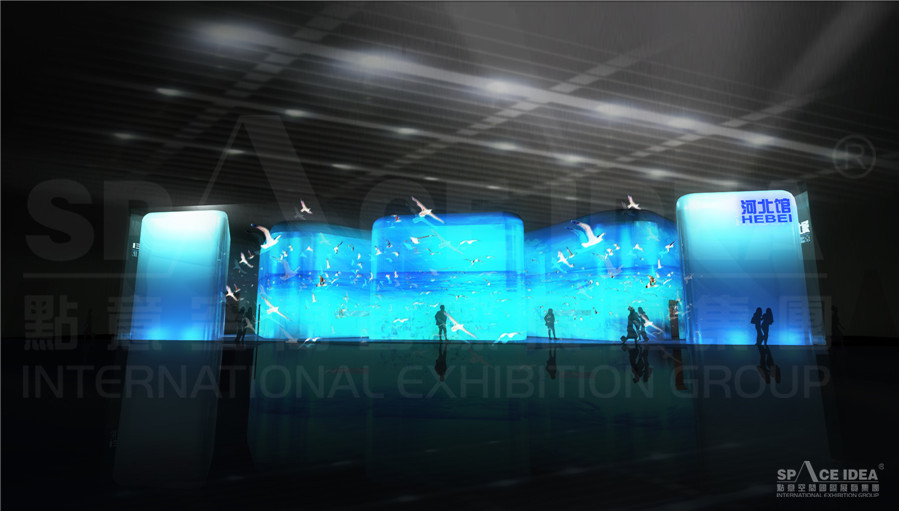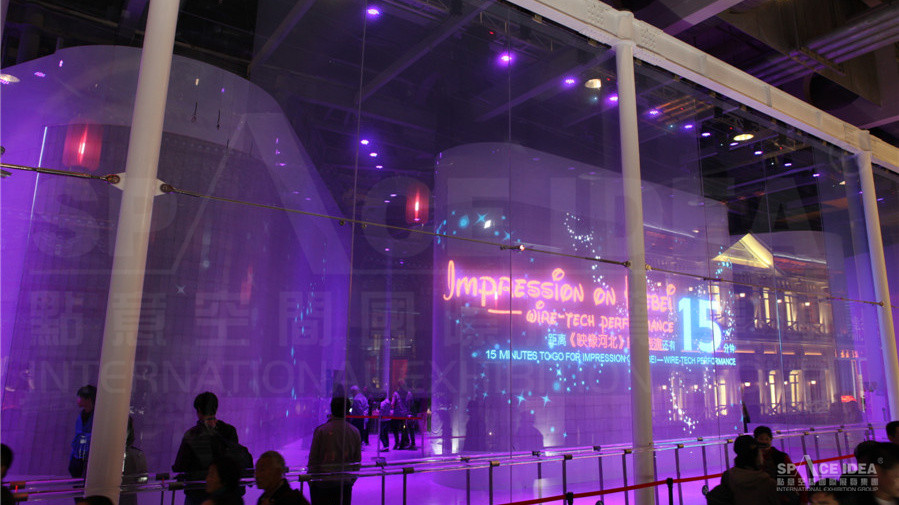Pavilion: 2010 China Shanghai World Expo Hebei Pavilion
Location: Expo Land, A Section
Highlight: Five cubes are used as carrier






The theme of Hebei Pavilion is “strategic zone, charming Hebei, big coastal province, beautiful homeland". The overall appearance and modeling design of the Hebei pavilion is inspired by the characteristic art of Hebei province - the painting form of the inner painting pot and the form of mutual arrangement and connection of the gene chain. The design of giving full play to the role of the publicity platform of the expo, Comprehensively considering the viewing Angle of domestic and foreign audiences, taking advantage of the spectator, entertaining show and display methods. Image information and interactive technology supplement the Hebei Pavilion, making it full of interest and formality, the audience in the entertainment can feel the rapid development of Hebei, people's hospitality and openness.
Exterior of the Pavilion:
Covering an area of 600 square meters, the Hebei Pavilion is a translucent and colorful fantasy space with five cubes. It is atmospheric in design, novel in shape and unique in line with the concept of world expo. Of the five cubes, three are theme pavilions and the other two are ancillary spaces. The three theme pavilions will be connected in a series of gene chains, with the outer layer covered by glass curtain wall.
The design inspiration of the facade of Hebei Pavilion is derived from the characteristic interior painting art of Hebei province. The four season’s scenes of Hebei province and folk symbols as intangible cultural heritage are dynamically displayed through multimedia images, giving the audience a strong visual impact.
Display Content:
The first pavilion of the exhibition area is called "the uncertain light of dawn". It tells the history of Hebei province and the origin of Beijing. Hebei has a long history; Baoding and Zhangjiakou are the birthplace of Chinese civilization. As recorded in the<Shih Chi >, it recorded that the Yellow Emperor once pursued “Northern porridge, Confucius Busan”. After consulting a large number of historical data, Zhuolu in Zhangjiakou is the first capital city in Chinese history. Gaoyang in Baoding City is the land of the first ancestor of the humanities. The <Shih Chi > records: “The Yellow Emperor passed away and buried in Bridge Mountain., the grandson of Changyi was Gaoyang Li, and it was also the Emperor of the Sui Dynasty." Zhuanxu, the ancient emperor, the grandson of the Yellow Emperor, is the emperor at his 20’s, the early country is in Gaoyang, the capital is built in Gaoyang ancient city, so Gaoyang is the second capital after the elk; in this pavilion, visitors can see a 2-minute film. The content of the film starts from the location of the capital, and elaborates on the relationship between Hebei and Beijing in the historical vicissitude of history from the perspectives of mountains and rivers, as well as the interweaving of various civilizations. Guo Shoujing opened the Tonghui River, Zhu Xi Shidu, Kangxi Yu Bi, "Zhu Fu Tongzhi" and so on are the elements of the show. In addition, there is an inverted cone device in this exhibition area. In addition to participating in video playback, this device is also an interactive device. Through the infrared capture system, the audience's shouts and applause will change the inverted cone picture.
In the second pavilion “the Charm of Beijing”, visitors can see the development of science and technology in Hebei, including low-carbon technologies such as solar energy and wind energy. Baoding's new energy industry accumulation area - "China Power Valley" is in a leading position in the world, you can also see the diving of Hebei Olympic champion Jingjing Guo as the starting point, taking the Olympics as the entry point, telling the industrial structure of Hebei, and expounding the short story of the inner relationship of “Gyeonggi Land” in the contemporary sense. In addition, visitors can also see a series of pictures, which will reflect the support and contribution made by Hebei province during the Olympic Games for Beijing in water, food, venue construction, urban construction, logistics, security, energy and transportation.
The third pavilion uses the story of the dialogue between the Tangshan earthquake hero and the World Expo mascot Haibao to express the self-improving attitude of people of Hebei and the positive developmental wisdom in economic development.
The external exhibition area is an urban experience area where people travel as if they are walking in the city streets of Hebei. Through video clips played on the LCD window on the wall, visitors can learn about the great changes that people in Hebei have in eating, living, traveling, working, etc., so that they can get a new look at cities like Shijiazhuang and Qinhuangdao, reflecting the wisdom of urban life, and explore the contents of industrial restructuring such as the “China Railway High-speed” hometown, the steel province, eco-agriculture, low-carbon cities, and China Power Valley.
Through the description of these four aspects, visitors have a certain understanding of Hebei's ancient and modern times, coupled with the use of dreamy colors and simple space modeling, the perfect integration of these inner elements, forming the Hebei Pavilion.